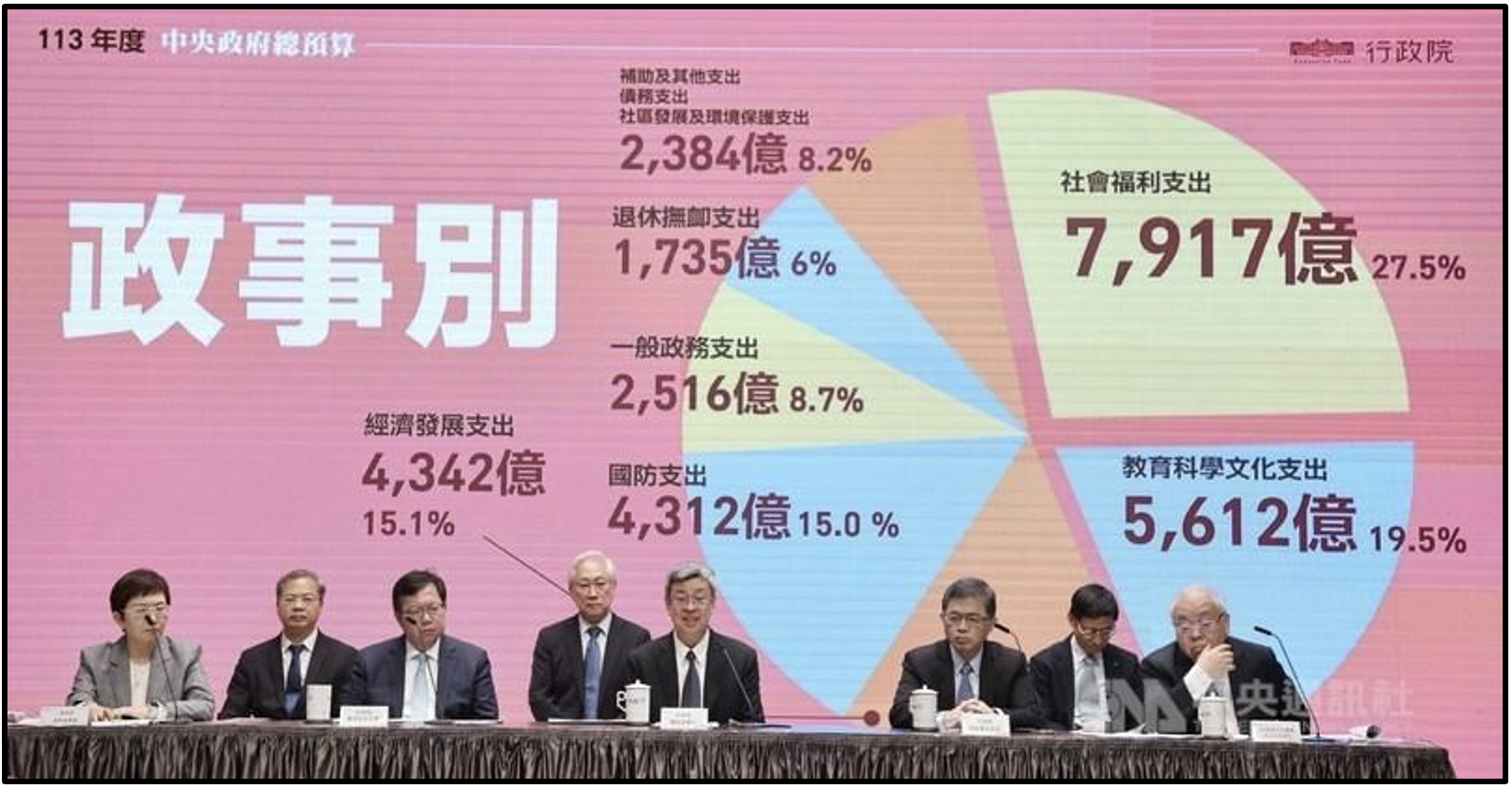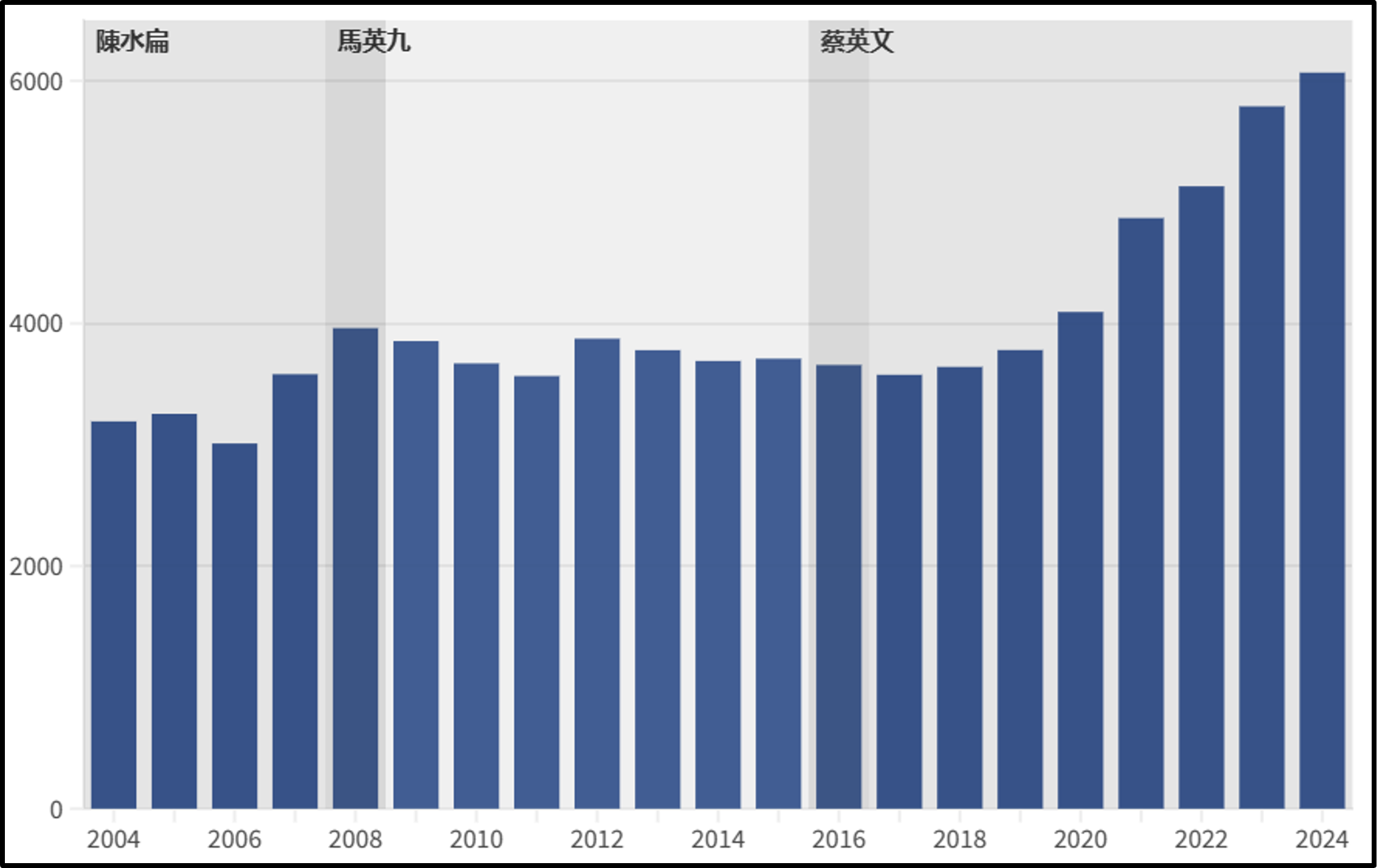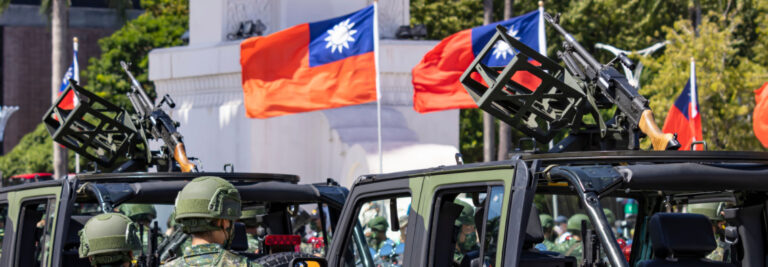August 23, 2023 marked the 65th anniversary of the outbreak of the Second Taiwan Strait Crisis in 1958 (also referred to in Taiwan as the “823 Artillery War” [八二三砲戰]), which began when troops of the People’s Republic of China’s (PRC) People’s Liberation Army (PLA) commenced artillery bombardments of Republic of China (ROC) Army-held positions on the islands of Jinmen (金門) and Matsu (馬祖). Senior Taiwan government officials—including President Tsai Ing-wen (蔡英文), Defense Minister Chiu Kuo-cheng (邱國正), and National Security Council Secretary-General Wellington Koo (顧立雄)—marked the occasion with a visit to Kinmen, in which they participated in ceremonies to honor the memories of those who served, and died, during the conflict. Tsai also used the occasion to call for an increase in the ROC’s military capabilities, stating in a speech that “To keep the peace, we need to strengthen ourselves […] we need to continue to reform the national defense, push for self-reliance, [and] strengthen our defense capabilities and resilience.”
Perhaps not coincidentally, on the following day Premier Chen Chien-jen (陳建仁) and other senior officials announced the administration’s proposed defense budget for 2024. The new baseline budget (主管預算) would stand at NTD $440.6 billion (approximately USD $13.8 billion)—an increase of 7.7 percent from the 2023 budget, and the seventh consecutive year-on-year increase in defense spending. The overall planned budget would increase to NTD $606.8 billion (approximately USD $19.1 billion) when expected supplemental defense budgets (特別預算) are calculated in. Per government officials, these projected expenditures would raise Taiwan’s overall defense spending to a new benchmark of approximately 2.5 percent of GDP.

Image: Premier Chen Chien-jen (fifth from left, center) and other senior officials hold a press conference in Taipei on August 24 to discuss the Tsai Administration’s proposed budget for 2024. In the displayed pie chart, military expenditures (國防支出) are shown as 15 percent of the overall government budget. (Image source: CNA)
Particulars of the New Defense Budget
Aside from the broad overview of the budgetary numbers, much about the budget’s content remains classified, and only limited information has been made public regarding the further specifics of the budget. Per press reporting on data from the Executive Yuan’s Directorate-General of Budget, Accounting, and Statistics (行政院主計總處), out of the 2024 defense budget NTD $130.6 billion (USD $4.1 billion) would be dedicated for “military investments” (軍事投資). Within that column, the “military purchase” budget (軍購預算) would stand at NTD $26.5 billion (USD $830 million) for acquisition programs to include a new trainer aircraft, combat systems upgrades to the Kang Ding class (康定級) frigates, and investment in an Air Force special project codenamed “Falcon 5” (天隼5號).
While new acquisition programs will often attract the greatest attention, it is likely that much of the Ministry of National Defense (MND, 中華民國國防部) budget remains dedicated to personnel and routine operating costs. Legislative Yuan National Defense Committee (立法院國防委員會) member Liu Shih-fang (劉世芳) was cited by press as saying that the budget increase reflected both higher personnel costs associated with the plan to extend conscripted service to one year, as well as higher operating costs (e.g., fuel and maintenance) associated with ROC air and naval forces responding to sea and airspace encroachments by PLA units.
It seems clear that special budget supplementals will continue to be a significant part of overall Taiwan defense spending, particularly as it pertains to the acquisition of new hardware. In late 2021, Taiwan’s government adopted a major defense supplemental budget for the years 2022-2026, which was intended primarily to increase the production of indigenously manufactured anti-ship and anti-aircraft missile systems. This also pertains to some of Taiwan’s most prominent arms purchases from the United States: for example, the discussions of the defense budget in August included a special budget of NTD $94.3 billion (USD $2.96 billion), which is to be applied towards the purchase of F-16V fighter jets and other equipment.
A Trend of Steadily Rising Defense Budgets, from 2020 to the Present
As coercive military pressure by the PRC directed against Taiwan has steadily increased from 2019 to the present (see illustrative discussions here and here), Taiwan’s Democratic Progressive Party (DPP, 民主進步黨)-led government has sought to boost both defense spending and the overall capabilities of the ROC armed forces. The past year has also seen other measures intended to boost defense capacity, including a plan announced in December 2022 to extend conscripted service time for young men and to undertake a limited restructuring of roles within the ROC Army. The planned defense budget increase for 2024 follows this broader program of efforts to increase military readiness.
As may be seen in the accompanying graphic (below), overall defense spending in the first two years of the Tsai Administration actually dipped slightly relative to the levels maintained in the latter half of the Ma Ying-jeou (馬英九) Administration. This changed markedly beginning in 2020, reflecting an increased sense of threat that followed the PRC’s elevation of coercive military activity in 2019. The trend towards significant year-over-year defense spending increases has continued since then, to the extent that the projected budget for 2024 would represent a 63 percent increase over the defense budget for 2017.

Image: Taiwan’s defense budgets from 2004 to 2024 (projected)—in units of ten million New Taiwan dollars—under the administrations of Chen Shui Bian (陳水扁) (2000-2008), Ma Ying-jeou (2008-2016), and Tsai Ing-wen (2016-present). Note the dramatic upward trend in defense budgets beginning in 2020, after the PRC commenced more regular and aggressive military coercive activities directed at Taiwan. (Image source: Kung Shih News [from government statistics], August 26, 2023).
Per BBC analysis of government figures, the MND’s baseline defense budgets (excluding special supplemental budgets) for the previous five years and 2024 are listed below. (Note that the actual overall budgets, which include special budget supplementals, would be higher.)
- 2019 base budget: NTD $240.4 billion (USD $7.55 billion)
- 2020 base budget: NTD $351.2 billion (USD $11 billion)
- 2021 base budget: NTD $361.7 billion (USD $11.36 billion)
- 2022 base budget: NTD $367.6 billion (USD $11.54 billion)
- 2023 base budget: NTD $415.1 billion (USD $13 billion)
- 2024 base budget: NTD $440.6 billion (USD $13.8 billion)
These trends clearly point toward likely continued growth in defense budgets. Furthermore, the likelihood that this trend will continue is backed up by reporting on spending projections from the Executive Yuan’s Directorate-General of Budget, Accounting, and Statistics. This indicates that expected overall outlays for “military purchases” (軍購) within the budgets from 2024-2027 will be NTD $231.85 billion (USD $7.28 billion), with average annual expenditures exceeding NTD $50 billion (USD $1.57 billion)—nearly double the NTD $25.2 billion figure (USD $790 million) for 2023, and almost triple the NTD $17.9 billion (USD $560 million) figure for 2017. (These figures likely reflect spending included in the large, multi-year supplemental budget passed in late 2021, but this is unclear from the available reporting.)
Conclusions
The significant increases in Taiwan’s military budgets over the past five years are part of a larger trend in the Asia-Pacific region of increased attention to security issues and rising defense spending—much of this occurring in direct reaction to Beijing’s increasingly aggressive behavior towards its maritime neighbors. It is only natural that Taiwan, as the state most directly threatened by potential PRC aggression, would also be seeking to build up its own military capabilities as a precautionary measure. There remain, however, a number of questions about the direction and scale of Taiwan’s defense spending.
Although the proposed new figures for 2024 (including supplemental spending) would reportedly bring Taiwan’s overall military spending to approximately 2.5 percent of GDP, many sympathetic foreign critics maintain that Taiwan’s defense budget needs to be raised even further. For example, Mark Esper, a former US Secretary of Defense during the Trump Administration, has recently commented that Taiwan’s overall defense budget should be raised to a benchmark over 3 percent of GDP. Questions also remain regarding the focus of the ROC armed forces, in terms of both force structure and strategic orientation. Comments by Taiwan government officials on the 2024 budget noted that, due to the increasing disparity in scale and capabilities between PRC and ROC forces, future acquisitions would increasingly emphasize “asymmetric operations” (不對稱作戰). This indicates that policymakers are increasingly adopting at least the language of an “asymmetric” defense approach—however that may be defined—although the extent to which such ideas actually permeate force structure and strategy remain an open question. [1]
The course of Taiwan’s domestic politics will also play a role. Current DPP presidential candidate Lai Ching-te (賴清德) has clearly signaled continuity with the policies of the Tsai Administration, and defense budgets would likely see continued growth under a future Taiwan government in which the DPP continued to hold both the executive and a majority position in the legislature. By contrast, the defense priorities of the other three figures in the presidential race—Kuomintang (KMT, 國民黨) candidate Hou You-yi (侯友宜), Taiwan People’s Party (TPP, 台灣民眾黨) candidate Ko Wen-je (柯文哲), and independent candidate Kuo Tai-ming (郭台銘)—are less clear, but tend to emphasize seeking better relations with the PRC rather than increased military investments. [2] As is the case with many other critical areas of policy, the future of Taiwan’s defense spending may be dependent on the outcome of Taiwan’s presidential and legislative elections in January 2024.
The main point: In late August, the Tsai Administration announced a proposed 2024 defense budget of NTD $606.8 billion (approximately USD $19.1 billion), including both the baseline budget and expected supplemental spending. This would represent a 7.7 percent increase from the previous year, and would reportedly bring Taiwan’s overall defense spending to approximately 2.5 percent of GDP. This continues a trend in significantly increased defense spending from 2020 to the present. However, debates continue regarding both the necessary scale of Taiwan’s defense spending, as well as the focus of that spending on weapons acquisitions and other programs.
[1] For further discussions on the debate within Taiwan defense policy circles regarding either “asymmetry” or a more conventional approach, see GTI’s panel discussion event “Taiwan’s 2021 Quadrennial Defense Review and the Direction of Taiwan’s Defense Strategy” (June 30, 2021). See also: John Dotson, “Taiwan’s New Weapons Acquisitions and the Continuing Debate Over Defense Strategy,” Global Taiwan Brief (August 25, 2021).
[2] The three opposition candidates have adopted varying positions on defense policy, most of which are vaguer than the position of continuity adopted by Lai Ching-te. After the promulgation of the new defense budget in August, Hou You-yi stated that he did not object to the budget increases, but blamed the DPP for elevated cross-Strait tensions, and indicated that improved cross-Strait relations would allow for the budget to be “flexibly adjusted” (彈性調整). Kuo Tai-ming has spoken little about military affairs, stressing instead his initiatives for peace with the PRC. Ko Wen-je’s defense policy statements have been vague, although he has expressed support for raising defense spending to 3 percent of GDP and reforming the conscription system.





